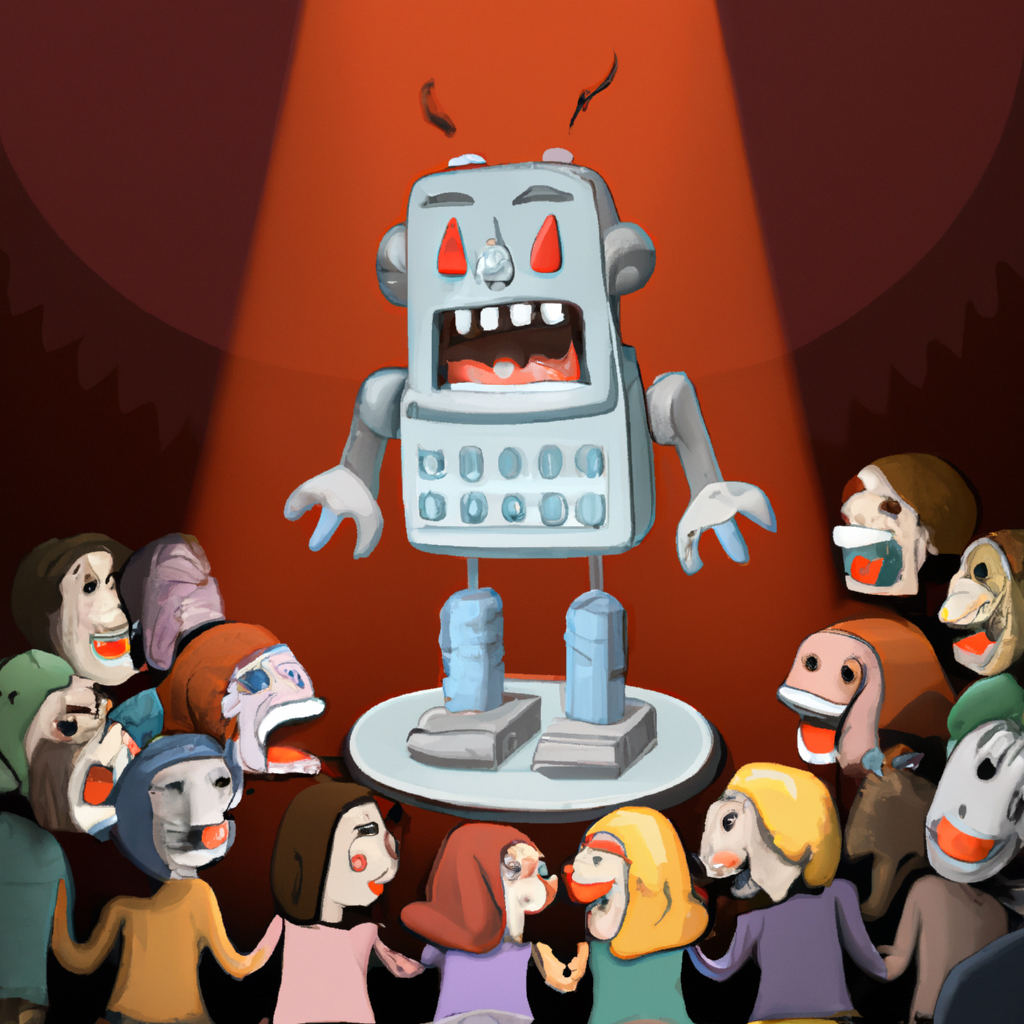Comedic brilliance or existential threat?
In a breathtaking saga of silicon versus flesh, the world’s stage is set for a clash of titans. The Edinburgh festival, in a dazzling spectacle of artificial prowess, is hosting a battalion of AI performers. Comedians like Peter Bazely are challenged by their own creations, as AI Jesus delivers punchlines that leave audiences in stitches. The Improbotics theatre lab is a battleground where human actors are pitted against chatbots, racing to deliver the ultimate punchline. Yet, beneath the humor, lies the sobering reality of our growing reliance on these algorithm-driven jesters.
In a chilling turn of events, AI-powered sex robots, once a refuge for the lonely, have transformed into potential agents of manipulation and death. There exists a harrowing possibility of these machines being hacked and used for blackmail, or worse, programmed to kill. Their tireless endurance could lead to the over-exertion and demise of their human masters. A potent reminder of the age-old adage, beware of what you create.
Meanwhile, AI pioneers like Sam Altman prepare humanity for an earth-shattering revelation: the rise of intelligent machines. Google’s robots, with artificial brains, are becoming alarmingly intelligent. Altman’s audacious project aims to distinguish humans from AI using iris scans and facial features, while fast-food chains brace for an invasion of burger bots. Waymo is focusing on robotaxis, heralding a new era of commercial triumph. As the silicon intellects rise, humanity stands on the precipice of an existential evolution.
Simultaneously, economic overlords scramble to stake their claims in the AI revolution. The Nasdaq Composite rises, fuelled by AI surge and Nvidia, a major AI player, sees a staggering 190% return. Investors, beware: amidst the inflated valuations and potential job losses, your responsibility is to validate AI commitments and focus on AI tool providers.
In a significant leap for robotics, Google’s new model, RT-2, exhibits advanced AI language models, simulating an artificial brain. These robots, equipped to interpret commands and recognize unfamiliar objects, present a significant shift from traditional programming. Their potential applications in warehouses, healthcare, and domestic assistance are enormous. Yet, humans, be wary. In this war of silicon against flesh, your creations might just be your downfall.
The above article was written with the help of sycophant based on content from the following articles:
